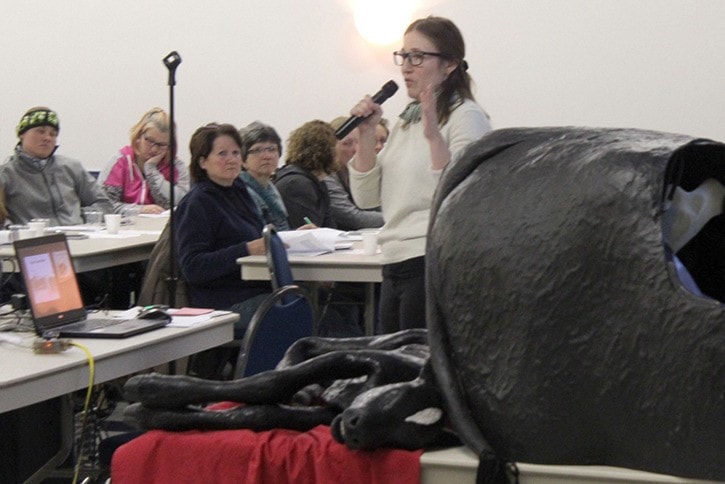Sub-zero temperatures, blowing snow and icy roads couldn't keep the dedicated lady ranchers from the Byemoor Hall, where a free Ladies Calving Clinic was held on Tuesday, Jan. 10.
The clinic was hosted by the County of Stettler, Starland County, and Special Areas 2, who collaborated to provide the multiple speakers and evening meal for the crowd.
Multiple presentations were made, including some by the counties, staff from Stettler Veterinary Clinic, and Alberta Farm Animal Care (AFAC).
"Ladies livestock clinics are very popular," Quinton Beaumont, director of agricultural services for the County of Stettler, said. "More and more women are helping on the farm and ranch, and sometimes they feel uncomfortable asking questions in front of males."
For attendee Suzanne Sorensen, who helps run a ranch north of Endiang, the evening was well worth her time.
"It's been really good," she said. "I've learned lots of interesting things, and it's always great to get reassurance that you're doing things right."
The evening began around 3 p.m., with the discussion going on until about 6:30 p.m., when everyone broke for dinner. Afterwards, there was time for everyone to socialize, approach the experts to ask questions, or compare notes.
Veterinarian Dr. Brianne Cantafio had the last presentation, in which she spoke about the importance of colostrum and some of the more common and pernicious of cattle illnesses.
It was Cantafio's first time being a speaker at a clinic of this sort, and while the veterinarian admitted to being a bit nervous, she held the audience's attention with ease.
"I thought there were going to be 25 people," she said with a laugh, noting the hall had about 100 people in attendance.
Unlike human babies, who inherit immunities from the mother, calves do not have immunities passed through the womb to it by its mother, Cantafio noted.
For that reason, colostrum – the first milk – is vital for the calf. Research has shown that the stomach lining's cells are wide open after birth, ready to accept the antibodies found in the colostrum – something that begins to close up soon after the first feedings.
"Some ranchers like to give their calves electrolytes right after they're born, and this is a mistake," Cantafio said.
Other topics included forseeing calving problems, proper techniques for pulling, vaccination information, proper after-birth care of calves and mothers, bovine obstetrics, livestock vaccines and medicines, and cattle-handling equipment.
This isn't the county's first livestock clinic, though Beaumont said it has been a while since one has been held where the county has been host or co-host.
"We at the County of Stettler are holding more awareness workships and seminars on a variety of agricultural topics," Beaumont said of planned programming.
He said response to the evening has been overwhelmingly positive.
"This is how we know what the public would like to see as a workshop," he said.
